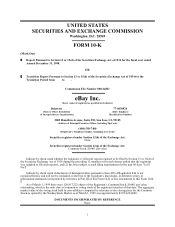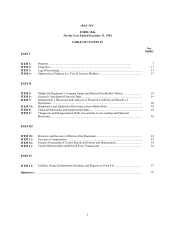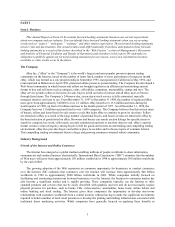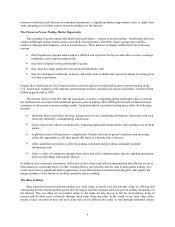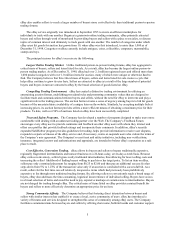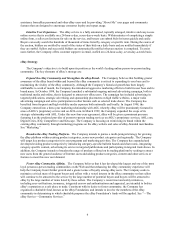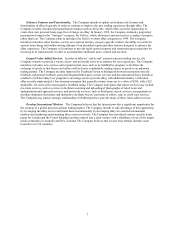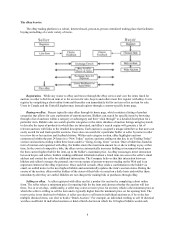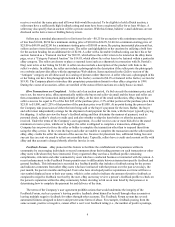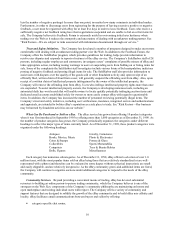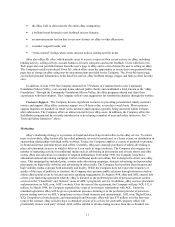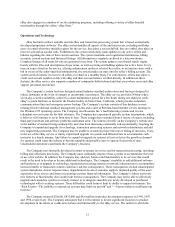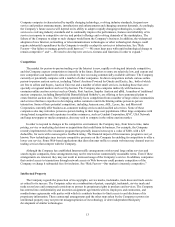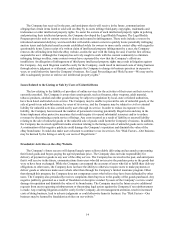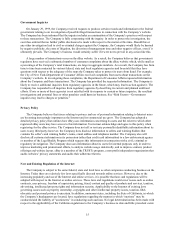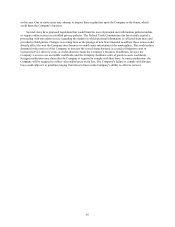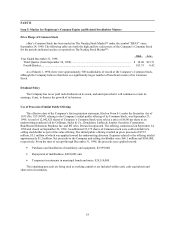eBay 1998 Annual Report Download - page 8
Download and view the complete annual report
Please find page 8 of the 1998 eBay annual report below. You can navigate through the pages in the report by either clicking on the pages listed below, or by using the keyword search tool below to find specific information within the annual report.
8
The eBay Service
The eBay trading platform is a robust, Internet-based, person-to-person centralized trading place that facilitates
buying and selling of a wide variety of items.
Registration. While any visitor to eBay can browse through the eBay service and view the items listed for
auction, in order to bid for an item or to list an item for sale, buyers and sellers must first register with eBay. Users
register by completing a short online form and thereafter can immediately bid for an item or list an item for sale.
Users in Canada and the United Kingdom may instead register through a country-specific home page.
Buying on eBay. Buyers typically enter eBay through its home page, which contains a listing of product
categories that allows for easy exploration of current auctions. Bidders can search for specific items by browsing
through a list of auctions within a category or subcategory and then “click through” to a detailed description for a
particular item. Bidders also can search specific categories or the entire database of auction listings using keywords
to describe the types of products in which they are interested, and eBay’ s search engine will generate a list of
relevant auctions with links to the detailed descriptions. Each auction is assigned a unique identifier so that users can
easily search for and track specific auctions. Users also can search for a particular bidder or seller by name in order
to review his or her auction and feedback history. Within each category section, eBay highlights auctions
commenced within the past 24 hours in a “New Today” section; auctions ending on that day in an “Ending Today”
section; and auctions ending within three hours under a “Going, Going, Gone” section. Once a bidder has found an
item of interest and registered with eBay, the bidder enters the maximum amount he or she is willing to pay at that
time. In the event of competitive bids, the eBay service automatically increases bidding in increments based upon
the then current highest bid for the item, up to the bidder’ s maximum price. As eBay encourages direct interaction
between buyers and sellers, bidders wishing additional information about a listed item can access the seller’ s email
address and contact the seller for additional information. The Company believes that this interaction between
bidders and sellers leverages the personal, one-on-one nature of person-to-person trading on the Web and is an
important element of the eBay experience. Once each bid is made, eBay sends a confirmation to the bidder via
email, an outbid notice to the next highest bidders and automatically updates the item’ s auction status. During the
course of the auction, eBay notifies bidders of the status of their bids via email on a daily basis and notifies them
immediately after they are outbid. Bidders are not charged for making bids or purchases through eBay.
Selling on eBay. A seller registered with eBay can list a product for auction by completing a short online
form. The seller selects a minimum price for opening bids for the item and chooses whether the auction will last
three, five or seven days. Additionally, a seller may select a reserve price for an item, which is the minimum price at
which the seller is willing to sell the item and is typically higher than the minimum price set for opening bids. The
reserve price is not disclosed to bidders. A seller can elect to sell items in individual auctions or, if he or she has
multiple identical items, can elect to hold a “Dutch Auction.” For example, an individual wishing to sell 10 identical
watches could hold 10 individual auctions or hold a Dutch Auction in which the 10 highest bidders would each

